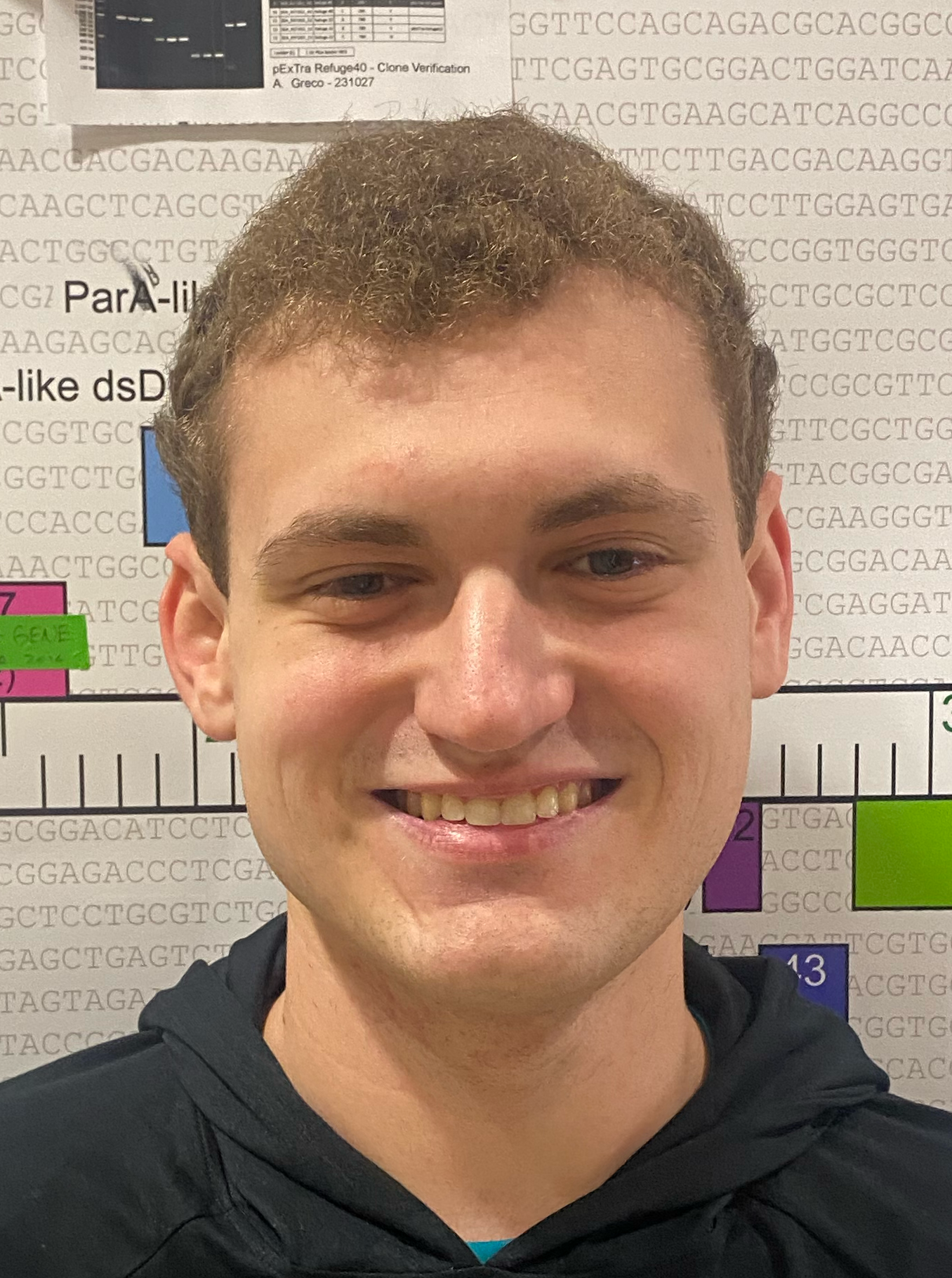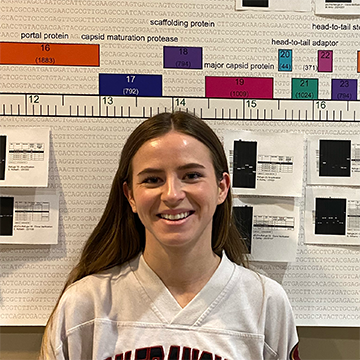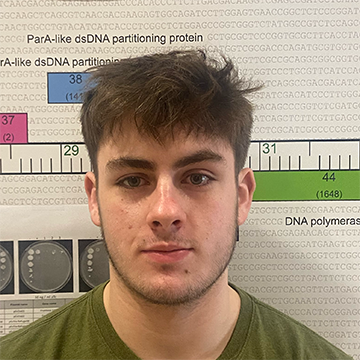Below is a summary of the abstract you submitted. Presenting author(s) is shown in bold.
If any changes need to be made, you can modify the abstract or change the authors.
You can also download a .docx version of this abstract.
If there are any problems, please email Dan at dar78@pitt.edu and he'll take care of them!
This abstract was last modified on March 31, 2025 at 4:53 p.m..

Temperate phages are distinguished by whether prophage DNA is integrated into the host genome or exist as an extrachromosomal element that replicates and is maintained independent of the host genome. Many cluster A phages, including EmyBug and Refuge, are non-integrating temperate phages that encode a partitioning cassette, which facilitates stable inheritance of prophage DNA. Partitioning cassettes are comprised of tandemly oriented parA and parB protein encoding genes and a repetitive parS sequence immediately upstream parA. We are taking a molecular approach to better understand the functional significance and interaction of partitioning cassette components. First, we analyzed the cassette and assess its role in replication and propagation. The Refuge partitioning cassette was introduced into pExTra, replacing the canonical M. smegmatis origin of replication (oriM). Electroporation of this plasmid into M. smegmatis resulted in a similar number of transformants as pExTra, indicating the Refuge partitioning element can function as an origin of replication. Subsequent constructs were generated in which the Refuge partitioning cassette was inserted in the original pExTra. This plasmid, which contains both the partitioning cassette and oriM, was stably propagated in the absence of kanamycin antibiotic selection, Next, we placed partitioning cassette elements under control of the Tet promoter of pExTra to examine the effect phage gene expression on host cells. Expression of Refuge or EmyBug parB had no effect on cell growth, but expression of Refuge parA abolished cell growth. In addition, constructs which contain EmyBug parA, have been un-transformable, supporting the cytotoxic nature of parA. Plasmids with Refuge parA-parB are also cytotoxic. Significantly, cytotoxicity of Refuge parA-parB is abolished by addition of parS sequences and we have obtained transformants of EmyBug parA-parB that include a small part of parS. These results suggest parS and parB elements are critical for autoregulation of parA. Collectively these results demonstrate functional significance to partitioning cassettes and the generation of new molecular vectors for future heterologous expression studies.



